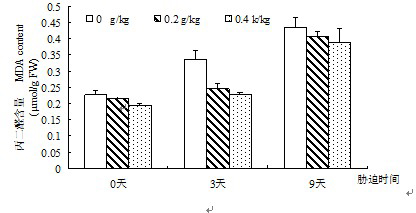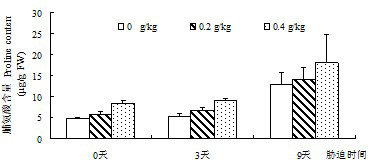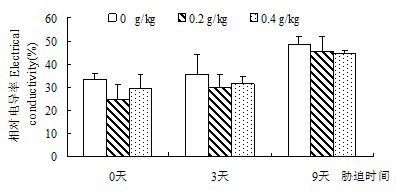Method adopting lanthanum for improving low-temperature resistance of ryegrass turf taking garbage compost as base material
A garbage composting and anti-low temperature technology, applied in gardening methods, botanical equipment and methods, gardening, etc., can solve the problems of reducing the use value of lawns, poor growth, and affecting the appearance of lawns, so as to promote the urban lawn greening system and promote optimization Effect
- Summary
- Abstract
- Description
- Claims
- Application Information
AI Technical Summary
Problems solved by technology
Method used
Image
Examples
Embodiment 1
[0061] (1) The compost is selected from the waste compost after fermentation in the waste composting plant;
[0062] (2) Add 70 g of the above-mentioned compost in a petri dish, weigh 1.5 g of ryegrass seeds and sow them in a petri dish, germinate and grow initially at room temperature;
[0063] (3) During the germination and initial growth period, the indoor temperature is 18°C and the relative humidity is 40%. Add 0.2g·kg to the compost culture medium 16 days after sowing -1 concentration of lanthanum nitrate;
[0064] (4) Continue culturing for 6 days after adding lanthanum nitrate, and then move the petri dish into a light incubator for cold stress treatment. The temperature is set at 15-10°C day and night, the light time is 9 hours, the light intensity is 100, and the experiment period is 34 hours. Days, in the 9 days of cold stress to carry out the determination of the resistance index.
Embodiment 2
[0066] (1) The compost is selected from the waste compost after fermentation in the waste composting plant;
[0067] (2) Add 70 g of the above-mentioned compost in a petri dish, weigh 1.5 g of ryegrass seeds and sow them in a petri dish, germinate and grow initially at room temperature;
[0068] (3) During the germination and initial growth period, the indoor temperature is 28°C and the relative humidity is 60%. Add 0.4 g·kg to the compost culture medium 16 days after sowing -1 concentration of lanthanum nitrate;
[0069] (4) Continue culturing for 6 days after adding lanthanum nitrate, and then move the petri dish into a light incubator for cold stress treatment. The temperature is set at 15-10°C day and night, the light time is 9 hours, the light intensity is 100, and the experiment period is 34 hours. Days, in the 9 days of cold stress to carry out the determination of the resistance index.
PUM
 Login to View More
Login to View More Abstract
Description
Claims
Application Information
 Login to View More
Login to View More - R&D
- Intellectual Property
- Life Sciences
- Materials
- Tech Scout
- Unparalleled Data Quality
- Higher Quality Content
- 60% Fewer Hallucinations
Browse by: Latest US Patents, China's latest patents, Technical Efficacy Thesaurus, Application Domain, Technology Topic, Popular Technical Reports.
© 2025 PatSnap. All rights reserved.Legal|Privacy policy|Modern Slavery Act Transparency Statement|Sitemap|About US| Contact US: help@patsnap.com



